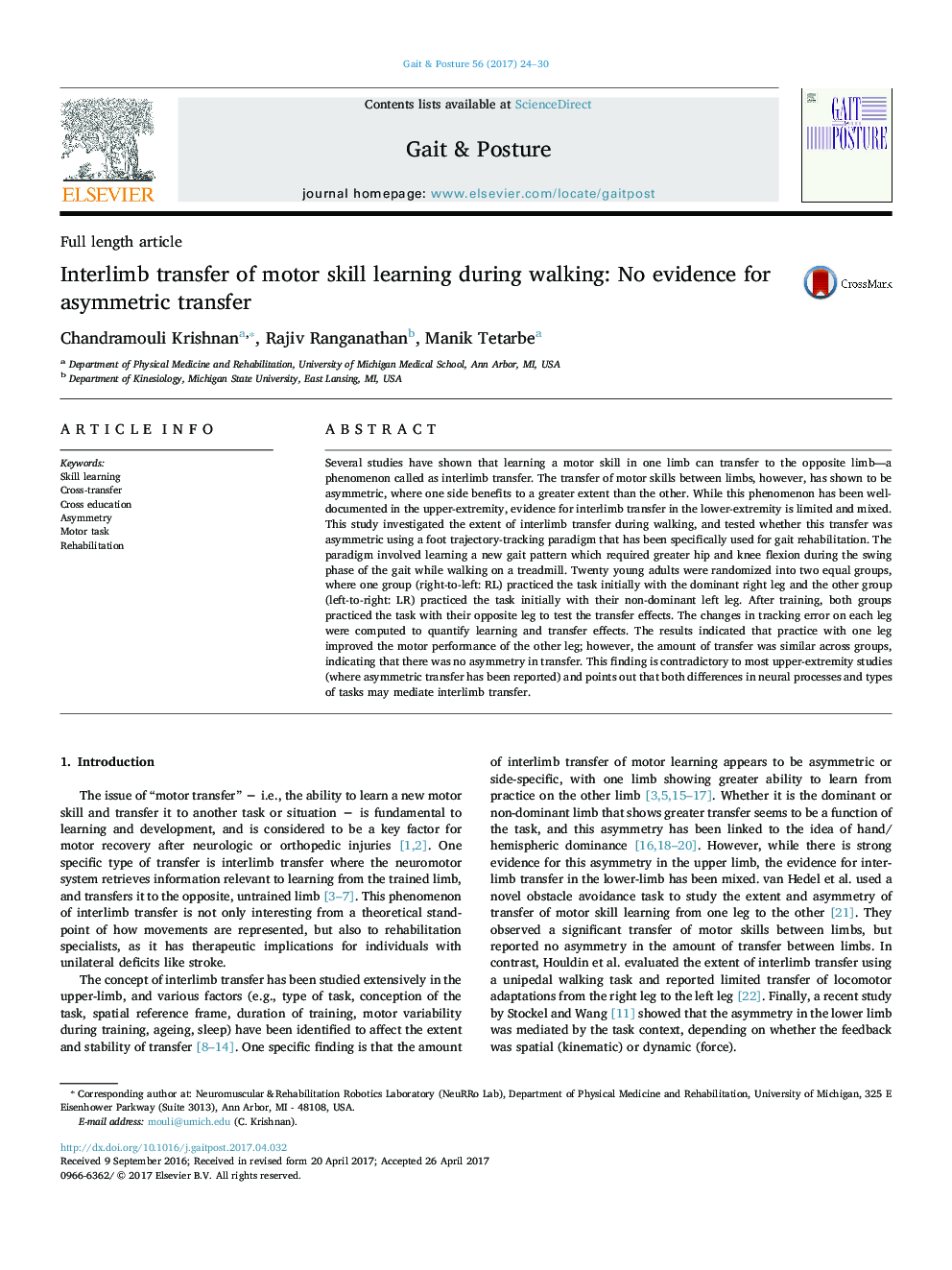| کد مقاله | کد نشریه | سال انتشار | مقاله انگلیسی | نسخه تمام متن |
|---|---|---|---|---|
| 5707492 | 1603839 | 2017 | 7 صفحه PDF | دانلود رایگان |
عنوان انگلیسی مقاله ISI
Interlimb transfer of motor skill learning during walking: No evidence for asymmetric transfer
دانلود مقاله + سفارش ترجمه
دانلود مقاله ISI انگلیسی
رایگان برای ایرانیان
کلمات کلیدی
موضوعات مرتبط
علوم پزشکی و سلامت
پزشکی و دندانپزشکی
ارتوپدی، پزشکی ورزشی و توانبخشی
پیش نمایش صفحه اول مقاله

چکیده انگلیسی
Several studies have shown that learning a motor skill in one limb can transfer to the opposite limb-a phenomenon called as interlimb transfer. The transfer of motor skills between limbs, however, has shown to be asymmetric, where one side benefits to a greater extent than the other. While this phenomenon has been well-documented in the upper-extremity, evidence for interlimb transfer in the lower-extremity is limited and mixed. This study investigated the extent of interlimb transfer during walking, and tested whether this transfer was asymmetric using a foot trajectory-tracking paradigm that has been specifically used for gait rehabilitation. The paradigm involved learning a new gait pattern which required greater hip and knee flexion during the swing phase of the gait while walking on a treadmill. Twenty young adults were randomized into two equal groups, where one group (right-to-left: RL) practiced the task initially with the dominant right leg and the other group (left-to-right: LR) practiced the task initially with their non-dominant left leg. After training, both groups practiced the task with their opposite leg to test the transfer effects. The changes in tracking error on each leg were computed to quantify learning and transfer effects. The results indicated that practice with one leg improved the motor performance of the other leg; however, the amount of transfer was similar across groups, indicating that there was no asymmetry in transfer. This finding is contradictory to most upper-extremity studies (where asymmetric transfer has been reported) and points out that both differences in neural processes and types of tasks may mediate interlimb transfer.
ناشر
Database: Elsevier - ScienceDirect (ساینس دایرکت)
Journal: Gait & Posture - Volume 56, July 2017, Pages 24-30
Journal: Gait & Posture - Volume 56, July 2017, Pages 24-30
نویسندگان
Chandramouli Krishnan, Rajiv Ranganathan, Manik Tetarbe,